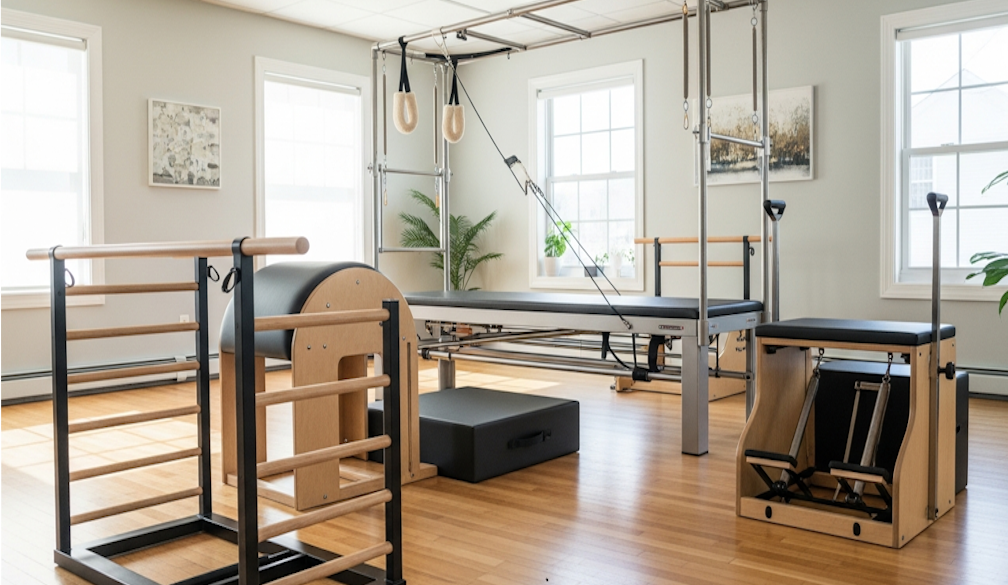Johnson Electric reports results for the year ended 31 March 2022
- For the financial year ended 31 March 2022, total sales amounted to US$3,446 million – an increase of 9% compared to the prior year.
- Excluding the effects of foreign currency movements and an acquisition, underlying sales increased by 7%
- Gross profit totalled US$702 million – a decrease of 3%
- EBITA, adjusted to exclude restructuring charges and significant non-cash items, decreased by 27% to US$244 million or 7.1% of sales (compared to 10.6% of sales in FY2020/21)
- Net profit attributable to shareholders totalled US$146 million – a decline of 31% compared to the prior year
- Underlying net profit totalled US$165 million – a decrease of 34%
- As of 31 March 2022, cash reserves amounted to US$345 million and the ratio of total debt to capital at the financial year end was 16%
HONG KONG SAR - Media OutReach - 12 May 2022 - Johnson Electric Holdings Limited ("Johnson Electric"), a global leader in electric motors and motion subsystems, today announced its results for the twelve months ended 31 March 2022.
Group sales for the 2021/22 financial year totaled US$3,446 million – an increase of 9% compared to the prior year. Excluding the effects of foreign currency movements and an acquisition, underlying sales increased by 7%. Net profit attributable to shareholders totalled US$146 million or 16.23 US cents per share on a fully diluted basis. Underlying net profit was US$165 million, a decrease of 34% compared to the prior year.
Sales Performance
The Automotive Products Group ("APG"), Johnson Electric's largest operating division, achieved sales of US$2,644 million. Excluding currency effects and an acquisition, APG's sales increased by 5%. This compares to a reduction in global light vehicle production volumes of approximately 1% over the same period.
Although the global economy was on a broadly improving trajectory for most of the 2021 calendar year, the automotive sector has remained under capacity-constrained conditions and unable to meet pent-up, underlying consumer demand – with global vehicle production volumes still more than 10% below their pre-pandemic levels. The largest constraining factor has been the persistent shortage of semiconductors necessary for manufacturing a large number of auto components and subsystems. As a result, OEMs have continued to make almost constant amendments to production schedules and focused their attention on a smaller number of vehicle models.
Additional factors hampering the auto industry's supply chain and disrupting production over the past year have included shortages of other specialist raw materials and components, disruptions to container shipping schedules, the outbreak of war in Ukraine and the recent resurgence of COVID-19 in China that has resulted in government-mandated factory shutdowns.
This unprecedented set of operational challenges is occurring at the same time that the industry is undergoing a fundamental structural shift away from internal-combustion engine technologies and towards hybrid and fully electric vehicles.
In these difficult operating conditions, APG has continued to achieve sales growth well above the light vehicle production volumes of the industry in every major geographic region. In the Americas, APG increased sales by 10% compared to industry production volume growth of 3%. In Europe, sales grew by 3% compared to a 10% decline in the region's vehicle production (with volumes in the key market of Germany dropping by almost 14%). And in Asia, our sales increased by 4% compared to a 1% decrease in overall industry output (including a 4% decline in China's passenger vehicle production during the period under review).
APG is able to continue to deliver encouraging growth in sales due to a product portfolio that is focused on the key long-term technology trends transforming the industry. This includes innovative technologies that enable electrification, reduce emissions, enhances safety and comfort, and heats, cools or lubricates critical vehicle systems.
The Industry Products Group ("IPG") achieved sales of US$802 million, which represented 23% of total Group sales. Excluding currency effects, IPG's sales increased by 12%.
This very satisfactory sales performance by IPG reflected both the continued progress being made to position the division to serve a range of exciting, high growth market segments and the generally buoyant global demand for consumer and industrial goods. It should be noted that while semiconductor and other materials shortages have also constrained supplies to many of IPG's end-markets, these disruptions have tended to be somewhat less severe than those experienced by the automotive sector.
The changes to consumer behaviour that emerged during the pandemic, including the rise in demand for "home-centric" products, remained a strong growth driver for many of the product applications served by IPG – although a slowdown in demand in some of these segments occurred during the second half of the year. The division achieved significant growth in the lawn and garden, ventilation, beverage, heating, window automation and white goods segments due to a combination of program launches and new business wins, higher market share and increased market demand.
On a regional basis, IPG experienced strong growth in Europe and the Americas as sales in the prior year were constrained by the impact of the COVID-19 pandemic. Sales in Asia, however, declined slightly – due to the combination of the different year-on-year pattern of pandemic-related effects on demand in China (including the most recent re-imposition of lockdowns in some provinces) and customer-specific situations that have been exacerbated by materials and component shortages.
Gross Margins and Operating Profitability
The Group's gross profit amounted to US$702 million – a decrease of 3% compared to the prior year and, as a percentage of sales, a decrease from 22.9% to 20.4%. The decline in gross margins reflected the combination of higher underlying raw material costs, rising labour costs (exacerbated by the inefficiencies caused by components shortages, disruptions to customer production schedules and recent government-mandated factory shutdowns in China), the ending of pandemic-related one-off cost-saving initiatives and subsidies, higher depreciation and customer contractual price reductions. These sharp increases in input costs were only partially offset by sales volume growth, hedging contracts and product price increases where contractually feasible.
Earnings before interest, tax and amortization ("EBITA"), adjusted to exclude the effects of restructuring charges and significant non-cash items, amounted to US$244 million or 7.1% of sales. In addition to the factors negatively impacting gross margins noted above, the major factors reducing profitability at the operating level were the sharp increase in freight and logistics expenses and also higher infrastructure costs and investments in IT.
Net Profit and Financial Condition
Net profit attributable to shareholders decreased by 31% to US$146 million or 16.23 US cents per share on a fully diluted basis. Underlying net profit, excluding the effects of restructuring charges and significant non-cash items, amounted to US$165 million compared to US$251 million in the prior year.
The combination of reduced profit, higher capital investments and, in particular, a significant increase in working capital requirements in response to rising end-market demand resulted in a free cash outflow of US$132 million (compared to a free cash inflow of US$171 million in the prior year). Notwithstanding a reduction in cash reserves to US$345 million as of 31 March 2022, Johnson Electric's financial condition remains sound with a total debt to capital ratio of 16%.
Dividends
Several of the macro-economic headwinds and supply chain disruptions currently impacting Johnson Electric's operations can be considered exceptional and potentially short-term in nature. The Board nonetheless considers it prudent for the Company to conserve its cash until operating conditions and the financial performance of the business improve. It has therefore recommended a final dividend payment of 17 HK cents per share. Together with the interim dividend of 17 HK cents per share, this represents a total dividend of 34 HK cents per share (compared to a total dividend of 51 HK cents per share in the prior year), equivalent to 4.36 US cents per share.
The final dividend will be payable in cash, with a scrip alternative where a 4% discount on the subscription price will be offered to shareholders who elect to subscribe for shares. The Board has further been informed that the controlling shareholder of the Company intends to subscribe for its entire eligible allocation of shares under the scrip dividend alternative. Full details of the scrip dividend alternative will be set out in a circular to shareholders.
Business Strategy and Management Initiatives to Improve Performance
The challenging operating environment does not alter the core elements in the Group's business strategy which include:
- investing in innovative motion-related products and technology solutions that address society's long term demand trends, particularly in the areas of electrification, emissions reduction, automation, mobility, safety and healthcare
- offering a highly responsive and low-cost manufacturing fulfilment model that effectively serves customers on a global and regional basis
- accelerating the transformation of our business processes and data management through the deployment of the latest digital platforms and tools
However, it has become increasingly evident that the effects of both the recent series of shocks to "just-in-time" manufacturing supply chains and the global inflationary surge in input costs are not likely to abate in a meaningful way in the short term. This is requiring an immediate and far-reaching response from management that extends to every part of our business.
All business groups and functional areas have been set aggressive cost reduction goals for the new financial year that regrettably requires targeted reductions in labour and staffing levels in order to maintain our competitiveness. Part of these headcount savings will be enabled by our investments in high-speed manufacturing automation and the ongoing optimisation of our operating footprint. Raw material and other components procurement contracts are being scrutinized for rationalization and cost saving opportunities. Within our functional areas, business processes are being streamlined and new digital tools adopted to reduce cost and improve productivity.
Chairman's Comments on the Annual Results and Outlook
Commenting on the annual results for the financial year 2021/22, Dr. Patrick Wang, Chairman and Chief Executive, said, "The financial year 2021/22 has been particularly challenging for Johnson Electric as several macro-economic and industry-specific factors have placed severe pressure on global component manufacturing supply chains. Although sales growth has been robust as the world economy continued its recovery from the COVID-19 pandemic, rising input costs and externally-driven disruptions to our operations sharply reduced profit margins."
Commenting on the outlook for the business, Dr. Patrick Wang, said, "Within the automotive sector, the uptake of new energy vehicles (NEVs) – both hybrid and fully-electric – is accelerating. In Europe, for example, electrically-chargeable cars now account for almost one in every five new vehicles sold. Although the NEV sector is still highly reliant on support measures such as purchase incentives and the availability of charging infrastructure, few can doubt that the greatest opportunities for future growth lie in this segment of the industry. Johnson Electric is strongly positioned to leverage its long-standing electro-mechanical expertise and global manufacturing footprint to continue to grow our share of content in NEVs, particularly in the areas of thermal management, electric driveline, braking and power steering."
"Technology advancements and evolving consumer preferences are presenting similarly exciting growth opportunities for the IPG division. Across a wide range of end-market applications, the demand for new products that feature increased levels of automation, energy efficiency, controllability and precision play directly to Johnson Electric's core strengths and capabilities. And, as exemplified by our new venture in AI-driven quality assurance software, IPG will not be limiting itself only to hardware components."
"On the other hand, the externally-driven headwinds and disruptions that hampered our operations and pressured our financial performance in the past year look set to continue in the near term."
"For much of the past year, a key challenge has been the shortage of semiconductors and other components that has constrained our ability to meet customer demand. These industry-wide shortages have yet to be resolved, but an emerging risk is that the sharpest rise in global inflation since the early 1980s now has the potential to crimp consumer demand in some end markets. Added to this, it is difficult to overstate the risks stemming from Russia's invasion of Ukraine (the largest military conflict in Europe since World War II) and the resurgence of COVID-19 in China."
"Faced with such daunting macro-economic and geopolitical uncertainties, we remain focused on those aspects of our business that we can directly influence and taking actions, wherever possible, to mitigate the risk of things outside of our control."
About Johnson Electric Group
The Johnson Electric Group is a global leader in electric motors, actuators, motion subsystems and related electro-mechanical components. It serves a broad range of industries including Automotive, Smart Metering, Medical Devices, Business Equipment, Home Automation, Ventilation, White Goods, Power Tools, and Lawn & Garden Equipment. The Group is headquartered in Hong Kong and employs over 35,000 individuals in 22 countries worldwide. Johnson Electric Holdings Limited is listed on The Stock Exchange of Hong Kong Limited (Stock Code: 179). For further information, please visit: www.johnsonelectric.com.
Forward Looking Statements
This news release contains certain forward looking statements with respect to the financial condition, results of operations and business of Johnson Electric and certain plans and objectives of the management of Johnson Electric.
Words such as “outlook”, “expects”, “anticipates”, “intends”, “plans”, “believe”, “estimates”, “projects”, variations of such words and similar expressions are intended to identify such forward-looking statements. Such forward looking statements involve known and unknown risk, uncertainties and other factors which may cause the actual results or performance of Johnson Electric to be materially different from any future results or performance expressed or implied by such forward looking statements. Such forward looking statements are based on numerous assumptions regarding Johnson Electric’s present and future business strategies and the political and economic environment in which Johnson Electric will operate in the future.
#JohnsonElectric
The issuer is solely responsible for the content of this announcement.



















